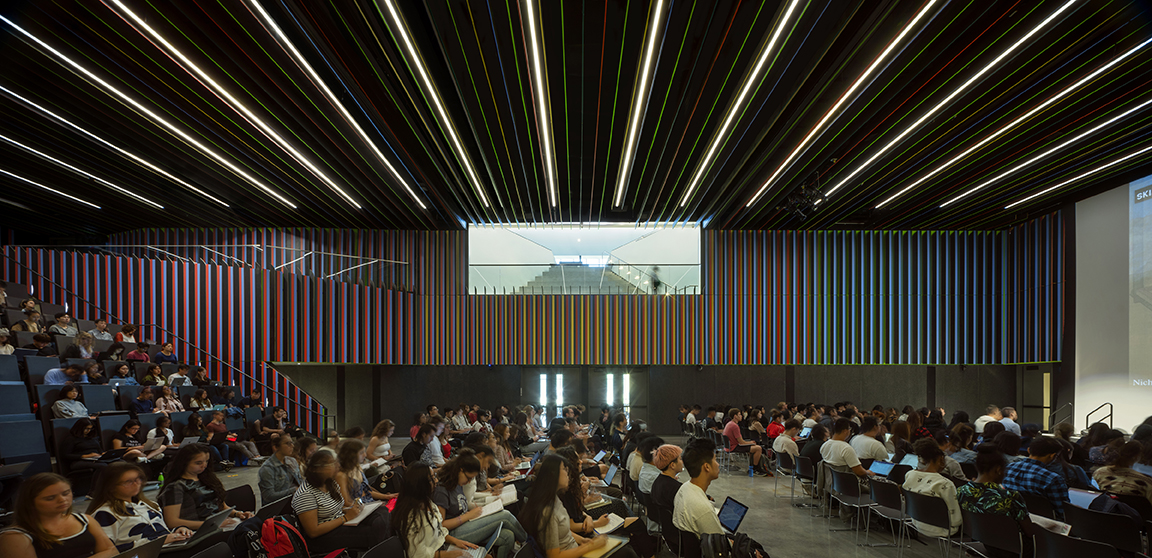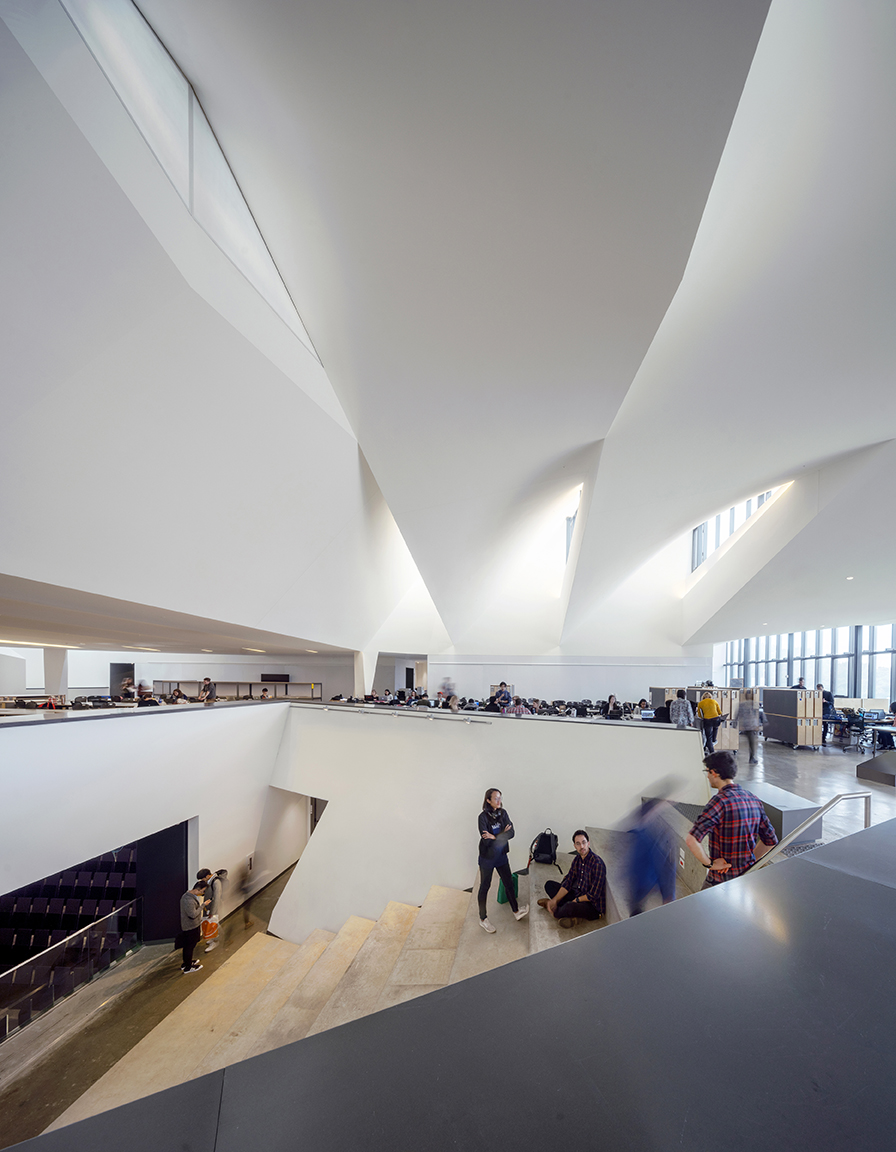Evelyn Lee is a Start-up Advisor in the Tech Space, Angel Investor, Founder of Practice of Architecture, and Host of the podcast Practice Disrupted. She is a prominent speaker on architectural practice evolution, technology integration, and diversity in AI, dedicated to guiding the profession into new horizons.
When is the last time you read a case study on how amazing it is to work for an architecture firm? Better yet, can you even recall a conversation about how great the culture is at an architecture firm? Or, when you talk about what you want in an architecture firm, did the conversation start with the projects and clients, or did it start with the firm’s culture?
The following is Part III of the three-part series looking at the need to redesign the culture of architecture.
- Part I defined culture and explored recent events that bring to light the increasing need for cultural change at the industry level.
- Part II looks deeper at the history of organizations working to change the profession’s culture for over a decade.
- Part III, this article, looks at how to intentionally create a values-based teaching and learning culture.

University of Toronto, Daniels Faculty of Architecture, Landscape and Design by NADAAA, Toronto, Canada
Intentional Development
Intentional development within the culture of architecture often takes a backseat to projects. When we do talk about culture, it is often expressed by the horrible things that it is collectively known for and is often expressed as a combination of:
- Long nights
- Low Pay
- Inequity
- Overwork
- High Turnover
- Lack of Transparency
- Poor Communication
- Unfriendly Competition
- Scope Creep
- Bad feedback loops
I’m just as guilty. Often when I talked about the best part of my work in architecture firms, it was about the projects, the clients and, in a few rare instances, the micro-culture created by a handful of individuals, but never the firm’s culture. And when I heard others talk about the culture in their firms, it was all about the social activities that brought individuals together. If a firm has a social committee, it is often called the culture committee.
And for the longest time, that was my view of culture in architecture. When I hear a lot of firm leaders talk about culture, that’s the lens they often view it through it too. But that’s one of our biggest problems. If it is true that “culture eats strategy for breakfast” (Peter Drucker) and ”culture is a powerful tool for creating a competitive advantage” (John Kotter), we can’t settle for complaining about the bad parts of our culture. We need to be intentional about how culture is developed in our firms.
So, how is culture defined?

University of Toronto, Daniels Faculty of Architecture, Landscape and Design by NADAAA, Toronto, Canada
Defining Values-Based Teaching and Learning Cultures
These days, I prefer to use the same definition as the Stanford Graduate School of Business Professor of Management, Charles O’Reilly, and Associate Dean of Academic Affairs at the Haas School of Business, Jennifer Chatman: “Organizational culture is a set of norms and values widely shared and strongly held throughout the organization.”
Why am I encouraging the development of a values-based teaching and learning culture?
Both aspects are essential for organizations to thrive and maintain a competitive edge in the business landscape.
Values-based teaching and learning cultures are complementary in business because they create an environment that fosters ethical decision-making, teamwork and a shared vision among employees. In a values-based teaching context, organizations are driven by their core values which guide behaviors and actions. Learning cultures, on the other hand, emphasize constant improvement, adaptation and growth.

University of Toronto, Daniels Faculty of Architecture, Landscape and Design by NADAAA, Toronto, Canada
How? Here are five ways:
- Alignment of organizational values and objectives: By integrating values-based teaching and learning cultures in business, companies ensure that their organizational values align with their goals and objectives. This alignment helps foster a sense of unity and purpose among employees as they work towards common goals while adhering to shared ethical standards.
- Encourage ethical decision-making: A values-based approach ensures that employees understand the importance of making decisions aligned with the organization’s core values. This creates an environment where ethical considerations are central to decision-making processes, ultimately leading to better long-term outcomes for the organization.
- Enhance teamwork and collaboration: Values-based teaching establishes a strong foundation for effective teamwork and collaboration by fostering empathy, trust, and open communication among team members. A learning culture further enables employees to continuously develop their skills and knowledge, allowing them to contribute effectively to collaborative projects.
- Improve employee engagement and performance: Promoting values-based teaching alongside a learning culture empowers employees to take ownership of their roles within the organization. These complementary approaches foster employee engagement, as workers strive to fulfill both personal growth opportunities while contributing meaningfully to the organization’s mission.
- Facilitate adaptation and innovation: Emphasizing continuous learning encourages a mindset of adaptability and innovation within the organization. Combined with a strong set of core values, this guarantees that new ideas and strategies drive organizational success and align with the business’s ethical commitments.
So, where do you get started?

University of Toronto, Daniels Faculty of Architecture, Landscape and Design by NADAAA, Toronto, Canada
Creating Values-Based Teaching and Learning Culture
To create a values-based teaching and learning culture in business, consider the following 10 steps:
- Define your core values: Start by identifying the key values that are important for your organization. These should be clear, concise and specific principles that will guide the behavior and actions of your employees.
- Align values with business objectives: Ensure that the core values you have chosen are aligned with your company’s overall objectives and goals. This will create a unified vision and set a purposeful direction for the organization.
- Integrate values into the hiring process: During recruitment, assess potential employees not only based on their skills but also their alignment with your organization’s core values. This will ensure that new hires’ values are aligned with yours and can contribute to the growth of the firm’s culture.
- Embed values in training programs: Incorporate the organization’s core values into all training initiatives, including orientation programs, leadership development courses and employee onboarding activities.
- Reinforce values through communication: Regularly communicate the importance of these core values to employees through various channels like emails, meetings and internal newsletters.
- Establish role models and mentors: Identify leaders who exemplify the organization’s core values and ask them to act as role models or mentors for other employees.
- Recognize and reward value-based behavior: Create performance assessments focusing on tangible results and aligning with core values. Offer praise or incentives to those who demonstrate strong adherence to these principles.
- Encourage open dialogue: Foster a workplace culture where employees feel comfortable expressing their thoughts about the organization’s values and how they relate to day-to-day operations.
- Continuously evaluate and refine: As your business grows and evolves, examine how well its teaching and learning culture aligns with its core values. Make any necessary adjustments to ensure ongoing alignment.
- Share success stories: Highlight successful examples of value-based decision-making within your organization, celebrating individuals who demonstrate exceptional adherence to these principles or unique initiatives that embody these values.

University of Toronto, Daniels Faculty of Architecture, Landscape and Design by NADAAA, Toronto, Canada
It’s easy to complain about the current culture within architecture without taking any action. But, taking action is the only way to change the culture within architecture, as it not only addresses the issues at hand but also initiates real transformation. Complaining about the outcomes of inaction merely highlights dissatisfaction without offering tangible solutions.
As architects and influencers of our built environment, we must be proactive and embrace innovative ideas to promote a more inclusive and sustainable architectural culture. By actively engaging in dialogues, sharing knowledge and committing to change, we can create an environment that fosters collaboration and progress toward an architecture that better serves its constituents and reflects our collective values. What are you going to do within your firm to take action?
The following is Part III of the three-part series looking at the need to redesign the culture of architecture.
- Part I defined culture and explored recent events that bring to light the increasing need for cultural change at the industry level.
- Part II looks deeper at the history of organizations working to change the profession’s culture for over a decade.
- Part III, this article, looks at how to intentionally create a values-based teaching and learning culture.
Architects: Want to have your project featured? Showcase your work by uploading projects to Architizer and sign up for our inspirational newsletters.




